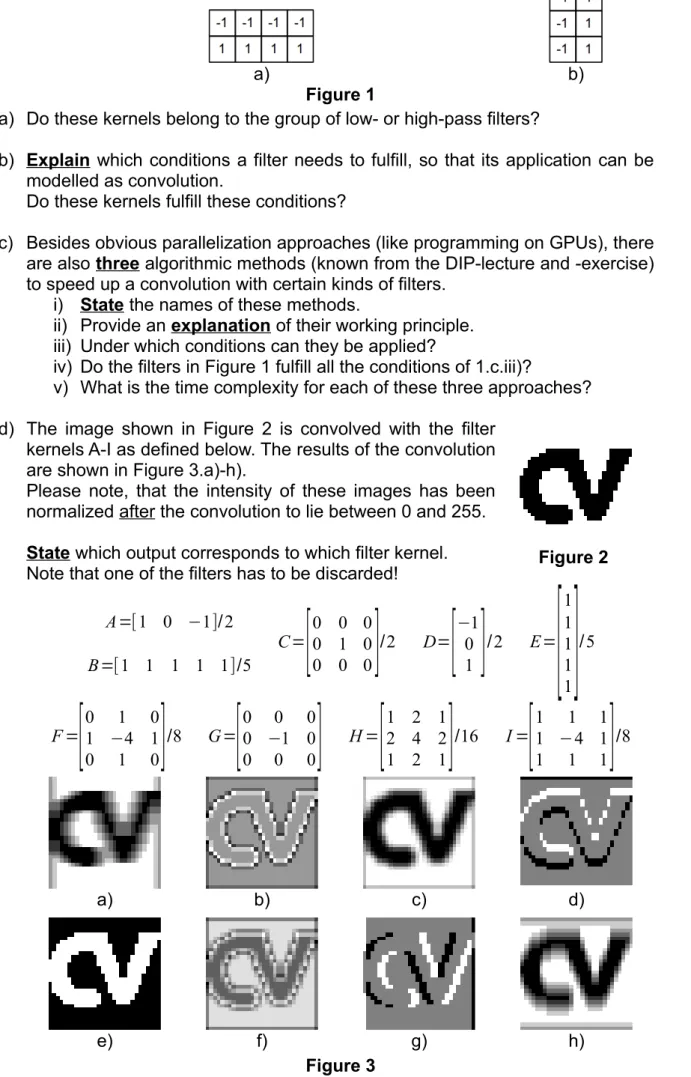Digital Image Processing Summer term 2015
Volltext
Abbildung

ÄHNLICHE DOKUMENTE
• Tasks: all having something in common with image processing (pattern recognition as well), see catalog, own tasks are welcome. • Point system (1 to 3 per assignment), 4 in
Euclidean Distance Transform can be done In linear time as well (the dimensionality does not matter). A bit more topology and digital geometry – digital straight lines,
Span the function space (Jean Baptiste Joseph Fourier, 1822)..
Implicit numerical schema leads to a system of non-linear equation.. Non-linear
Idea: Try to maximize the seeming quality – search for a trivial task in the equivalence class.. Maximize the
Similar approach: project the feature space into a subspace so that the summed squared distance between the points and their.. projections is minimal → the result is
Let an oracle be given – a function that estimates the model, which is consistent with a given -tuple of data points.. Examples: a straight line can be estimated from 2
Discrete domain of definition: reduction to large linear systems Continuous domain of definition: calculus of variations,. Gâteaux-derivative,